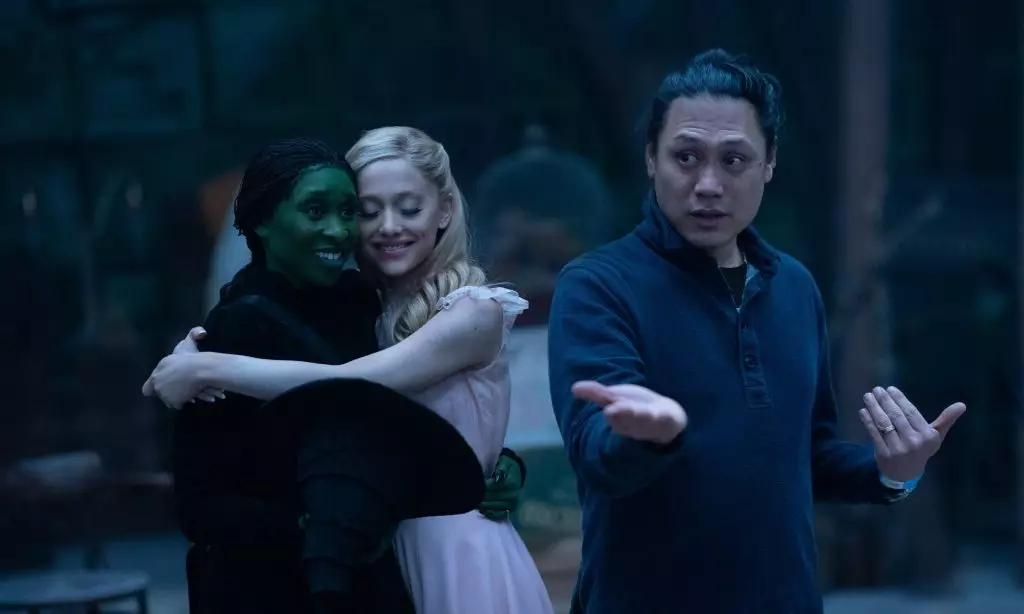Jon M. Chu, the creative force behind the much-anticipated film adaptation of the Broadway hit ‘Wicked’, has ignited conversation regarding the aesthetic choices made for this vibrant reinterpretation of the classic world of Oz. Fans have voiced disappointment online regarding the film’s visual style, which some have criticized for lacking the vivid technicolor splendor of the 1939 classic, ‘The Wizard of Oz’. However, Chu’s informed approach to the film’s color grading reveals a deeper intention: to build a more authentic and immersive experience rather than merely echoing the colorful visuals of its predecessors.
> “If it was a fake place, if it was a dream in someone’s mind, then the real relationships and the stakes that these two girls are going through wouldn’t feel real.”
In a recent conversation, Chu articulated that the aim was to offer audiences a tangible connection to the land of Oz. He elaborated that his vision of color was meant to evoke a sense of realism, as though the viewers could actually feel the grit and texture of this fantastical environment. Rather than a hyper-saturated dreamscape, he sought to present a more grounded reality where the emotional depth of the characters could thrive amid a more organic backdrop.
Despite Chu’s intentions, the dialogue surrounding the film’s artistic choices has remained heated since the initial trailers were unveiled. Critics labeled the film’s aesthetic as “desaturated” and “drab”, arguing that its muted approach detracted from the whimsical charm associated with the source material. Conversely, others have come to defend this fresh visual perspective, arguing that it lends an emotional weight to the story that aligns with the characters’ journeys. This polarized response highlights the challenge of reinterpreting beloved classics within the bounds of contemporary filmmaking.
Some fans on social media have suggested that the film’s aesthetic would benefit from additional filters to enhance its vibrancy. However, this notion of artificially infusing brightness could undermine Chu’s sincere attempt to depict Oz as a real place with a distinct atmosphere. His commitment to grounding the narrative in a world that feels lived-in rather than staged or digital showcases a significant shift in the cinematic approach to fantastical storytelling.
An essential point of discussion lies in the obsolescence of traditional technicolor filmmaking techniques. Chu referenced the reality that the vibrant color processes of the past are no longer feasible due to their cost and complexity, which further supports his choice to pursue an alternative visual strategy. By steering away from the impossible-to-replicate brilliance of technicolor, he opens the door for a more nuanced portrayal of emotions anchored in realism.
> “The color contrast goes up over time because that is what Elphaba brings to this world,” he noted, speaking to the evolving nature of the film’s visual narrative.
As audiences watch the growth of key characters, Elphaba and Glinda, Chu seeks to reflect that evolution through subtle shifts in color that mirror their deepening understanding of themselves and the world around them. This thematic interplay between color, character development, and dialogue underscores an inventive sophistication that invites viewers to engage with the film on multiple levels.
Regardless of the ongoing discussions about the film’s aesthetic, ‘Wicked’ has defied expectations at the box office with record-breaking earnings. Impressively, it achieved the highest global and domestic opening for a movie based on a Broadway show, highlighting that audiences are receptive to Chu’s innovative vision. The film’s financial success may, in part, be attributed to its star-studded cast, featuring talents such as Ariana Grande and Cynthia Erivo, alongside seasoned actors like Michelle Yeoh and Jeff Goldblum.
As ‘Wicked’ continues to draw in audiences and shatter box office records, Chu’s vision appears to resonate with many despite the initial critiques. His commitment to portraying a realistic and lived-in Oz might lead to a transformative cinematic experience that encourages the audience to rethink their understanding of the fantastical world that has captivated generations. As the story unfolds, it becomes apparent that the journey through Oz, albeit less technicolor, is paved with authentic relationships and emotional depth – a legacy worth celebrating.

